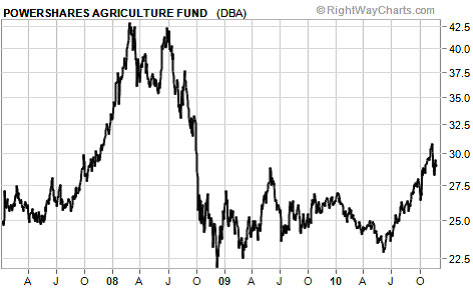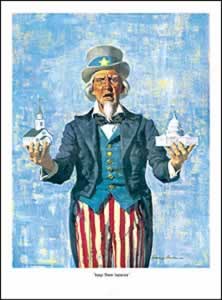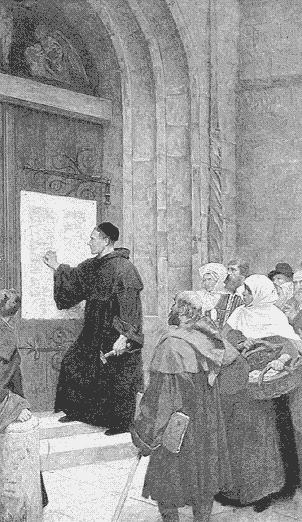Wednesday, December 29, 2010
Benedict XVI and WCC Leader Reaffirm Goals for Visible Church Unity
The general secretary of the World Council of Churches, Dr. Olav F. Tveit met in a private audience with Pope Benedict XVI at the Vatican; his first meeting with the Pontiff since assuming office as the general secretary, and his second visit to the Vatican. The two discussed at length about a number of issues such as the Middle East, but primarily on “visible church unity.” The question is church unity under whose teaching?
“We had a very open and friendly conversation,” said Tveit, where he emphasized the “importance of the World Council of Churches’ work,” and what he has been called to do as the general secretary.
Benedict XVI expressed his interest in how the W.C.C. are now developing and planning for the work they are going to do in the future, where Benedict XVI has himself been involved in the W.C.C.’s Commission on Faith and Order since the 1970s, when he was still cardinal Jozef Ratzinger.
Could it be possible that Ratzinger, a Catholic official, was patiently sowing the seeds of ecumenism and Catholic doctrine during his tenure as Prefect for the Congregation of the Doctrine of the Faith in Rome? Today the fruit of the ecumenical movement is being seen through the increased cooperation of these bodies with the Catholic Church. Benedict XVI is trying to consolidate this ecumenical cooperation.
The mission of the W.C.C., an organization of 349 churches, excluding the Catholic Church seek “unity, a common witness and Christian service.” The W.C.C. is composed of mostly liberal mainline Protestant, Orthodox, Pentecostal and Evangelical denominations, who deny such essential doctrines as the inerrancy of the Scriptures and the literal bodily resurrection of Christ. These principles lead directly to papal authority. The Papacy wants to “sit a queen” (Revelation 18:7).
During the meeting, the Pope was interested in theological issues and how to “strengthen the work of visible unity between the churches.” Benedict spoke of the Bible being the centrepiece as one way (not the only way) of strengthening church unity. Historically however, once the Holy See controls the interpretation of scripture, she also controls the people. Ultimately the Vatican insists that the authority of the pope is the point under which unity centers.
“The Roman Church reserves to the clergy the right to interpret the Scriptures. On the ground that ecclesiastics alone are competent to explain God’s word, it is withheld from the common people.” The Great Controversy, p. 597.
Rome continues to work with the churches of the W.C.C. As the chuches have come closer to each other and to Rome in doctrine and practice, their own distinctive doctrines have diminished or even disappeared, while papal moral and ethical teachings are more and more prominent.
Tveit stated that the Catholic Church becoming a member of the W.C.C. was not a “pressing or urgent issue.” “It [has] a strong cooperation in commissions, but it is also a cooperation that is going on every day.” Rome doesn’t need to join the W.C.C. because they are all looking to her for guidance in their ecumenical development. Rome continues to be the mother church. See Revelation 17:5.
Pope Benedict XVI Calls for Diffusion of Church’s Social Doctrine
“In order to globalize the social doctrine of the Church,” he said, “it seems opportune to multiply the centres and institutes that are dedicated to its study, diffusion and realization throughout the world.”
Benedict is blunt in that his object is to make Catholic social teaching the foundation of all societies through institutions of influence. Through many different channels, the papacy seeks to reform the United Nations Organization, economic institutions, international finance, social organizations and educaation institutions so that Catholic teaching and principles pervade throughout the world. In Caritas in Veritate Benedict said that there is an “urgent need of a true world political authority.” Obviously, the pope is aiming to be that authority. (See Daniel 7:7, 8, 19, 20 and Revelation 18:7).
Benedict XVI the “construction of a social order that at last conforms to the moral order…” In plain language; the moral order that the Holy See would define.
The encyclical further advocates for the free movement of migrants. This strategy allows Catholic migrants to influence those host nations with thier Catholic social and moral teaching. With human numbers on her side, the Vatican fast gaining ground for the dissemination of her doctrines.
Caritas in Veritate also speaks about the globalisation crisis, and the encyclical’s solution is to allow for the “large-scale redistribution of wealth on a world-wide scale.” Benedict, at a World day event for migrants on 26th October, said “All have the same right to enjoy the goods of the earth whose destination is universal.” Redistribution of wealth takes money from rich countries and gives it to poor countries, and makes rich countries poorer. In the process, the Vatican can influence the process through influence on international financial institutions like the International Monetary Fund.
Benedict XVI has called on the Pontifical Council to “dedicate itself…to the search for more adequate ways to convey the contents of the social doctrine.” Benedict is trying to target “the great centres of formation of world thought,” such as the press, universities, economic and social institutions of the world.
“She is silently growing into power. Her doctrines are exerting their influence in legislative halls, in the churches, and in the hearts of men.” “History testifies of her artful and persistent efforts to insinuate herself into the affairs of nations; and having gained a foothold, to further her own aims, even at the ruin of princes and people.” Spirit of Prophecy, vol. 4, pg. 397; The Great Controversy, pg. 580.
Tuesday, December 21, 2010
Wikileaks Reveals Vatican Involvement with Global Politics
Wikileaks is a website that publishes material leaked by insiders or others in government or business. A low-level U.S. intelligence analyst who is being held at a military base in Virginia allegedly leaked over 250,000 cable messages.
“Secretary of State Hillary Clinton blasted the move Nov. 29 as ‘not just an attack on America’s foreign policy interests” but an “attack on the international community.’”
“According to Wikileaks, 852 of the documents slated to be published involve correspondence between the U.S. and the Vatican.”
“The Vatican daily newspaper L’Osservatore Romano stressed that the release of the cables does nothing to change diplomatic relations between the U.S and the Holy See.”
The entire batch of the Vatican-related cables is expected to be published in the upcoming weeks.
While it is no surprise that the Vatican is involved in global politics, it is important to understand that one day there will be revelations that will expose the Vatican’s real intentions in all its “diplomatic” behavior. Perhaps Wikileaks is laying the foundation for the time when the sins of Babylon will be unmasked by God’s faithful servants under the power of the latter rain. Evidence must be available so that God’s messengers can make the links and show the fulfillment of Bible prophecy, and expose the stealthy but rapid progress of the papal power.
“Thus the message of the third angel will be proclaimed. As the time comes for it to be given with greatest power, the Lord will work through humble instruments, leading the minds of those who consecrate themselves to His service… The sins of Babylon will be laid open. The fearful results of enforcing the observances of the church by civil authority, the inroads of spiritualism, the stealthy but rapid progress of the papal power—all will be unmasked. By these solemn warnings the people will be stirred. Thousands upon thousands will listen who have never heard words like these. In amazement they hear the testimony that Babylon is the church, fallen because of her errors and sins, because of her rejection of the truth sent to her from heaven.” Great Controversy, p. 606-607.
Monday, December 20, 2010
Monday, December 13, 2010
How the U.S. Government Guaranteed the Coming Food Crisis
By Porter Stansberry with Braden Copeland
Saturday, November 27, 2010
Over the last several years, I've written constantly on the growing likelihood of a global currency collapse.
The governments of Europe and the United States have accumulated debts so large they can't ever hope to repay them, except with currencies whose value will be inflated away by money-printing.
That's led me to recommend inflation hedges like railroads, gold, silver, and various forms of energy. Owning these "real assets" is the single best way to protect yourself from the inflationary crisis. But make sure you don't forget the most important inflation hedge of all: food.
If you've been reading the financial press for the past few months, you know the prices of vital food commodities are soaring. The price of corn is up 47% since this summer. Soybeans are up 30%. Wheat is up 43%.
I expect this trend of higher food prices to continue for years as the U.S government intentionally debases the dollar while lying to you the whole time about wanting a "strong currency." There's also a good supply/demand case to be made for owning agricultural assets. Let's start with the largest crop in the United States, corn...
In 2009, U.S. farmers grew 39% of the world's corn – 307.4 million metric tons. The crop was worth $48 billion. Our corn exports totaled $8.7 billion.
Most harvested corn in the U.S. is used to feed livestock – 43% of 2009 production. Almost as much (41%) was used for food, consumer, and industrial products (toothpaste, adhesives, cosmetics, starches, sweeteners, oils, beverages, industrial alcohol, fuel ethanol, etc.). The remainder was exported. The U.S. sent most of its corn to Japan, Mexico, and South Korea.
The second-largest corn grower, China, produced 165.9 million metric tons, or half the U.S. production. The European Union was a distant third, harvesting 62.7 million metric tons. Brazil checked in fourth, at 51 million metric tons.
In 2009, a severe drought in China killed millions of bushels of corn. Stockpiles dwindled to alarming levels as the government sold corn to keep the price from rocketing higher. Into 2010, the situation hasn't improved. The Chinese have become net importers of corn for the first time in 16 years. Experts predict China will require 6 million to 8 million metric tons of corn this year.
The Chinese corn crunch reminds the world of the food shortages of 2006-2008. Average global prices for wheat, corn, and soybeans spiked more than 100%. Rice prices surged more than 200%.
This chart of the PowerShares Agriculture Fund (DBA) shows the sharp rise in agricultural commodity prices from 2007 to 2008...

This price rise resulted from changing diets in developing countries and the U.S.'s move to use corn as a fuel source (ethanol). From 2006 to 2008, total global grain consumption increased 3% per year, up from 2% per year from 2000 to 2006. People were eating more meat. You need seven pounds of feed grain to produce one pound of beef.
Increasing affluence leads to a desire for greater luxury in everything, including food. Developing and developed countries are now competing for what they want to eat. And that means prices are going up again.
Notice the right edge of the chart. The price of the DBA basket of agricultural commodities is breaking higher. A large component of this fund is the United State's second largest crop, soybeans.
The U.S. produced $31 billion worth of soybeans in 2009. It's our largest agricultural export. Total exports in 2009 exceeded $16 billion, setting a record.
The U.S. produced almost one-third of the world's soybeans in 2009 (91.4 million metric tons). Brazil and Argentina combined for 50% more of the globe's production. China produced 7%, and India produced 4%.
Soybeans are also used for animal feed. They have twice as much protein content as any other major vegetable or grain. Their protein also makes up many common meat and dairy substitutes, including soymilk and tofu. Soybean oil is used for food and industrial applications.
When it comes to soy consumption, the story has changed in recent years. China has overtaken the U.S. as the leader...
In 2005, China was second, consuming 45 million metric tons of soybeans compared with the U.S.'s 51 million metric tons. Last year, China consumed at least 60 million metric tons. The U.S. consumed less than 50 million metric tons.
Unfortunately for China, its domestic production can't begin to satisfy its growing soybean consumption. In 2009, the Chinese imported more than 45 million metric tons of soybeans. Almost half came from the United States. Chinese producers harvested a little more than 15 million metric tons on their own.
The China National Grain and Oils Information Center is projecting total Chinese imports for 2010 will total 60 million metric tons. That would be a 33% increase over 2009. The U.S. will likely supply half of this. This demand is already driving soybean prices back toward their record 2008 levels of $16 per bushel...
The combination of increasing global demand coupled with the Fed's quantitative easing makes a huge move higher in these commodities (and funds like the DBA) likely. Prices could soar high enough to trigger a global crisis.
When you read about this in the next year or two, don't say you weren't warned... and don't say you aren't prepared.
Good investing,
Porter Stansberry and Braden Copeland
Click here to view original source...
Friday, December 10, 2010
Colombia and El Salvator Wonder After..
He praised the “deep Catholic roots” of Colombia, which are an “inspiration…”
Casting the church as a beneficial influence in Colombia he said, the church “has left indelible imprints in… culture, art, health, social coexistence and the building of peace. It is a spiritual patrimony that has germinated in the course of the years and in all corners of Colombia in innumerable and fruitful human, spiritual and material realizations.” The Pope urged Colombia to safeguard these things as a “valuable heritage and to develop them as a beneficial proposal for the whole nation.”
The pope similarly characterized the services the Church offers to El Salvadore by emphasizing the social programs of the church. He said the Church tries to serve the “common good in all its dimensions,” including housing needs, employment, and other social agendas.
Benedict castigated other churches by saying that they undermine Salvadorian culture. “It would be strange if Christ’s disciples were neutral in the presence of aggressive sects” that appear to offer an “easy and comfortable religious answer” but which in reality undermine Salvadorian culture [meaning Catholic culture], as well as clouding the “beauty of the evangelical message and splitting the unity of the faithful around their pastors [Catholic priests].”
Wednesday, December 8, 2010
Vatican to Promote Sunday Celebration Through World Meeting of Families.
Tuesday, December 7, 2010
UK Ordinariate Will Be Established in January
At the end of December five Anglican bishops will resign their positions in the Anglican Church and enter the Catholic Church in January requesting ordination as Catholic Priests under a new ordinariate to be established by papal decree.
All of this is preparation for the ordinary and the former Anglican bishops to “to assist with the preparation and reception of former Anglican clergy and their faithful into full communion with the Catholic Church during Holy Week,” said a statement released by the Catholic Bishops’ Conference of England and Wales.
The new ordinariates are Rome’s way of decimating as much of the Anglican Church as possible. Remember it is the Anglican Church with the King James Bible and Protestant teachings that accompanied the British empire as it spread its colonies all over the world. It was single handedly responsible for establishing the English language as the language of business, trade and commerce, and especially laid the foundation for the protestant United States with its republican constitution. It was the Protestant British colonies that laid the foundation for the Remnant Church to grow and flourish and establish its unique and Biblical teachings, and which would carry the final warning to the world and proclaim the second coming of Christ.
The disintegration of the Anglican Church has great significance to those who understand the principles for which it once stood.
Zenit Article
Wednesday, December 1, 2010
Rowan Williams Meets with Pope Benedict XVI
“On Nov. 8, five Anglican bishops announced they were resigning their posts to enter the Catholic Church under special terms outlined last year by Pope Benedict. One of the five, Bishop John Broadhurst of Fulham, told the London Times, that he believed thousands, not hundreds, of laity would follow them into the Catholic Church.”
Obviously, the meeting was intended to smooth relations between the two churches over the defection of whole communities of Anglican Churches for the Catholic Church.
The Archbishop, however, is trying to downplay the number of conversions to Rome. “He said he was ‘deeply skeptical’ about the ‘larger claims’ of a massive exodus of Anglicans to Rome,” in an interview. “I don’t see [the papal creation of personal ordinariates] as an aggressive act, meant to destabilize the relations of the churches, and it remains to be seen just how large a movement we’re talking about.”
“The process is just getting underway… By way of these ordinariates Anglicans will be able to “cross over” singly or en masse into the Catholic Church while retaining their liturgical traditions.”
“For the first time, Archbishop Williams suggested that worshipers who join the ordinariate could be allowed to stay in their Anglican churches under a plan to let Roman Catholics share Church of England facilities.”
Not only is Rome attempting to decimate the Anglican Church of its members and even its bishops and priests, it is also attempting to recover its property in the process.
“And all the world wondered after the beast.” Revelation 13:3. Which churches are next?
Catholic News Agency [Source]















